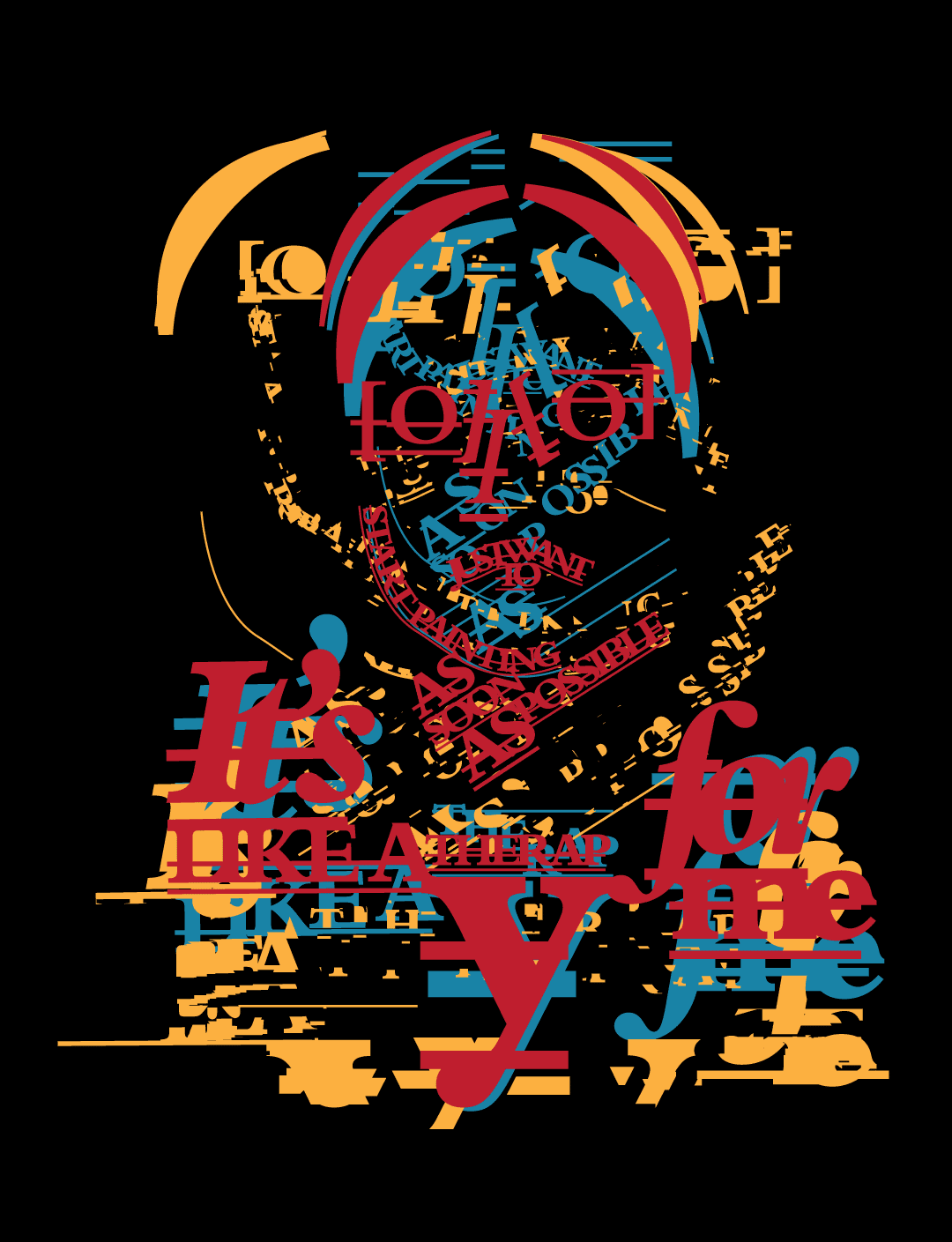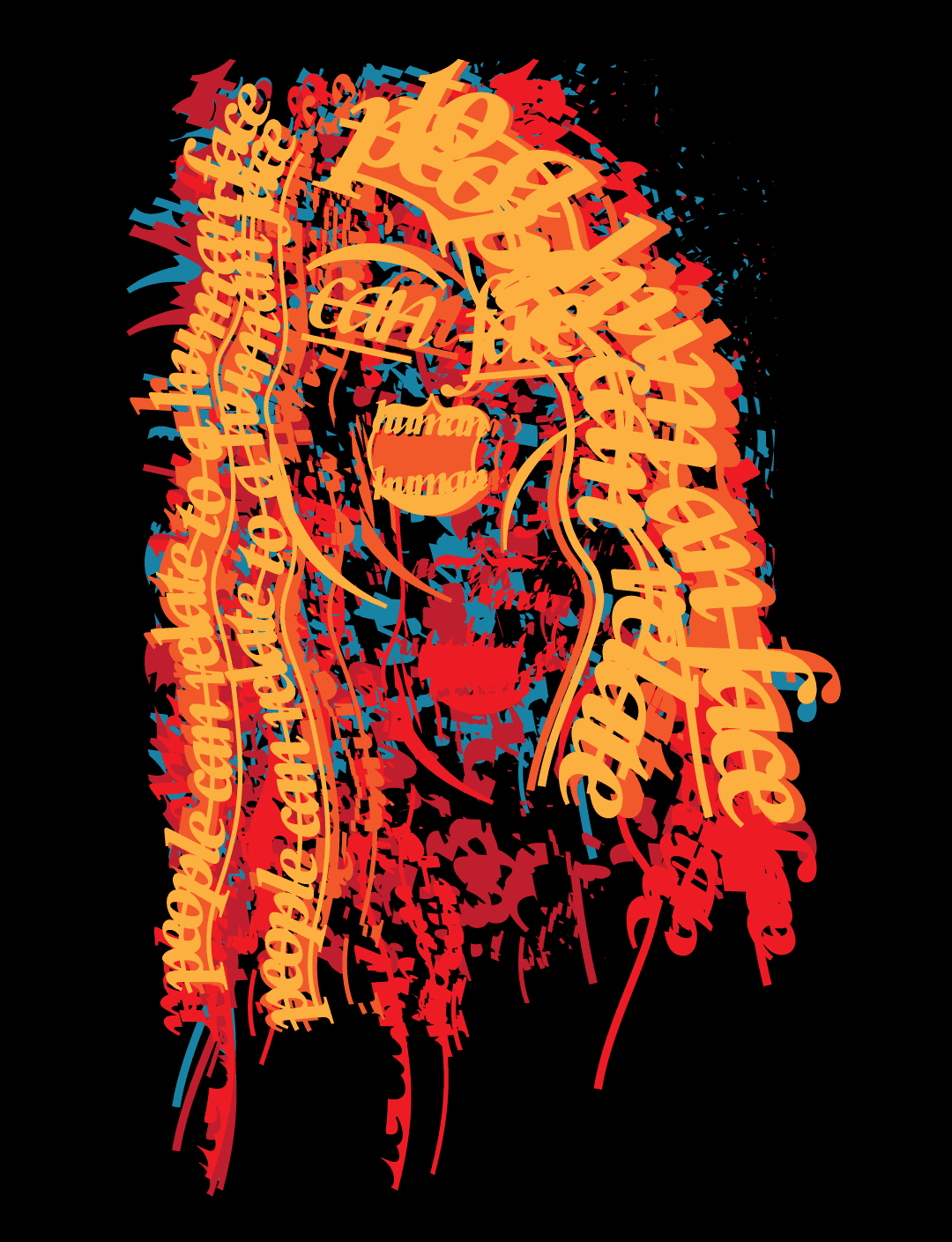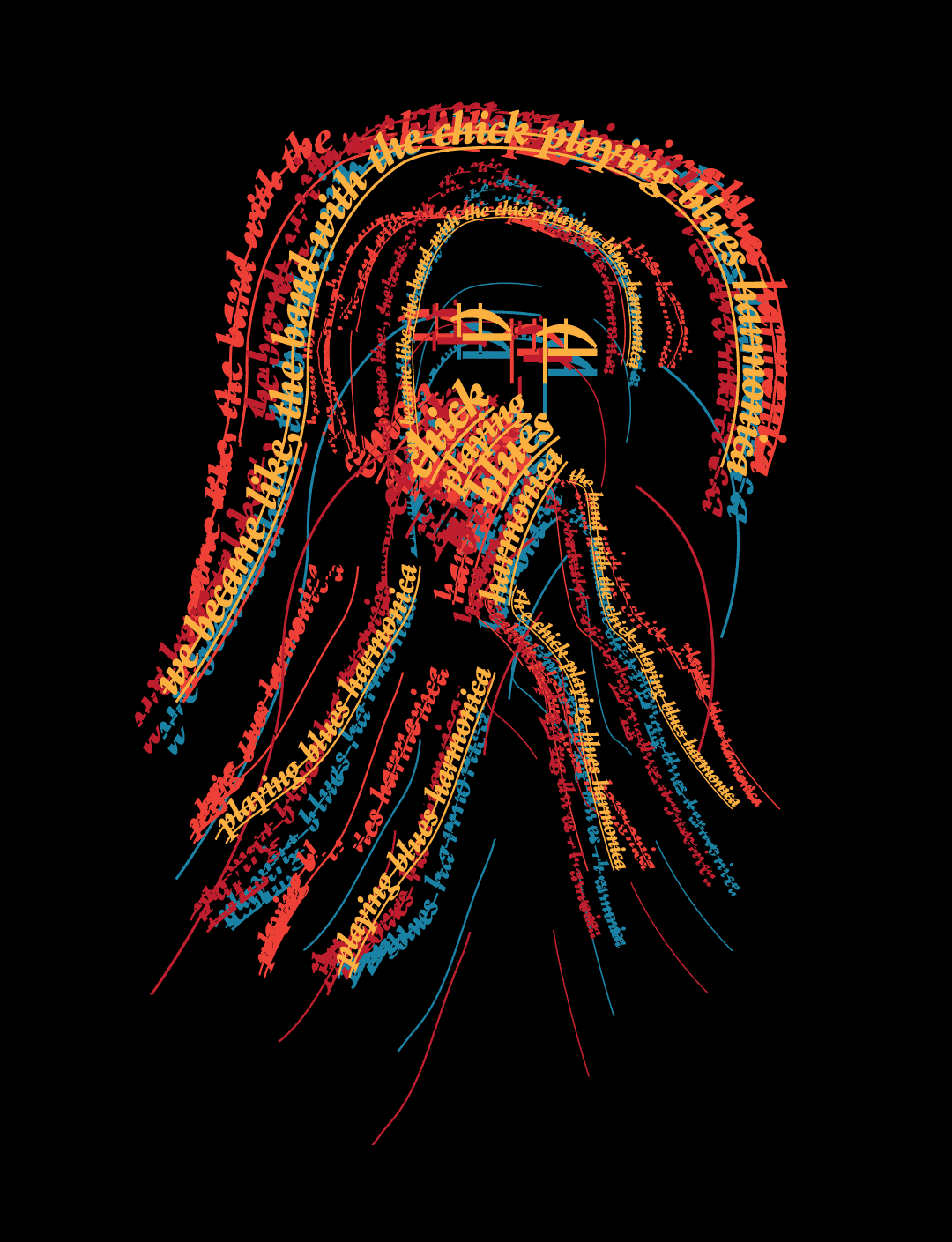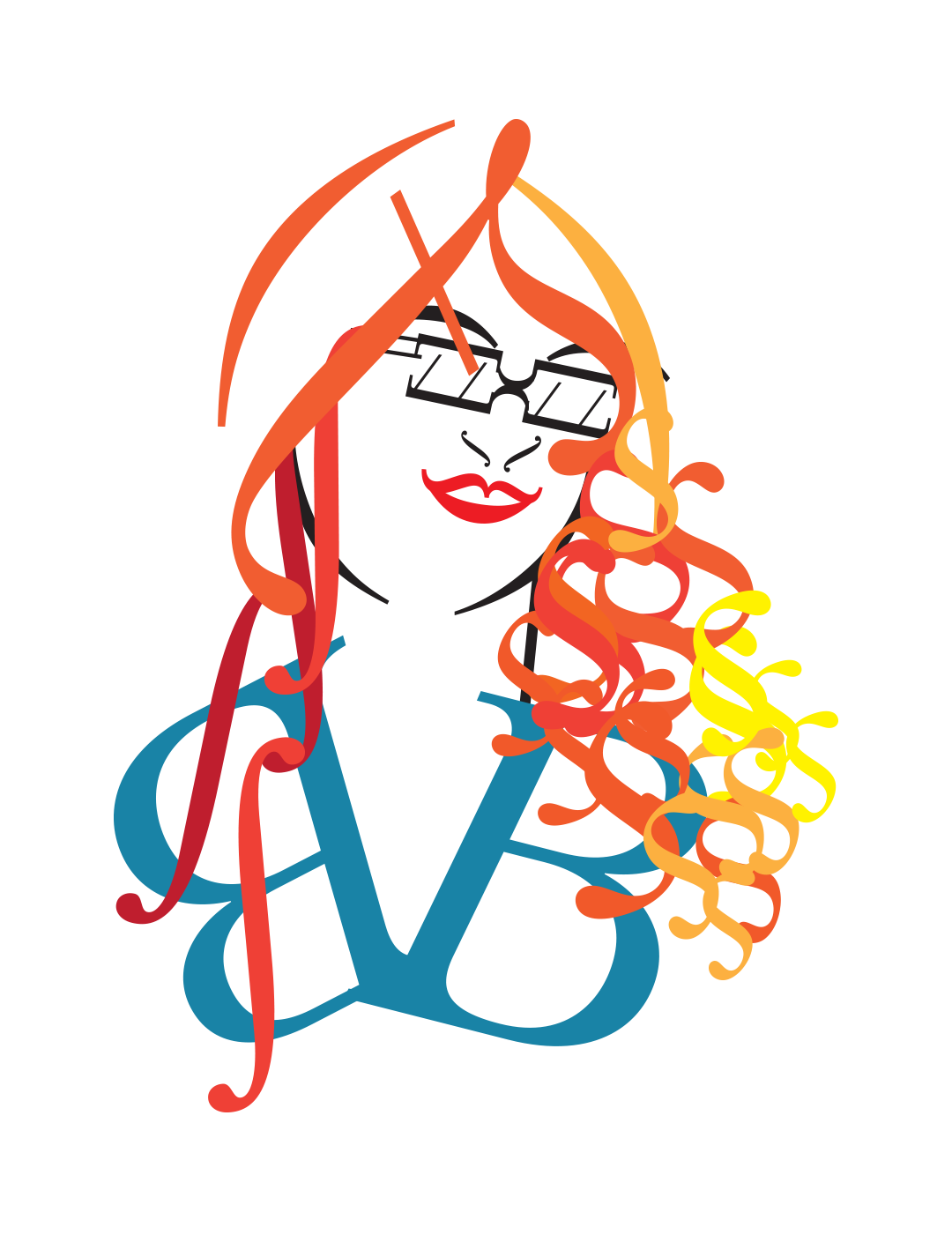Sydney Busskohl--- 22 August 2015
By Lorenzo Princi
What do you do?
Yeah, so: I have a full-time job just like you, and it’s funny because I often struggle with being an artist at heart and having to work this full-time job that-- to pay my bills - that doesn’t align with my inner artist at all. Maybe you can relate? I go to work every day and I have to be this very professional, like put together polished person which I’m just not! That’s just not who I am, and it’s just really funny. The painting I’m working on right now is just like a commentary on how I go to work every day and I have to pretend to be this very like professional person when really I want to let my inner artist out and like finally live my truth of being an artist but--
Anyway, what I do: I sell luxury apartments in Seattle, Washington-- downtown Seattle-- I have a really fabulous job really. I work for a great company and it’s just-- it just looks great, it looks great on paper. Every day is beautiful, I work with like-- I sell apartments to VPs, Creative Directors. Very impressive people I work with every day and I have to dress up really nice every day and maintain this professional image, and my boss is ... You know when I first started I was very unpolished and my boss told me a lot of times like, “Sydney, you need to work on acting more professional and you can’t come to work with ripped panty hose, you can’t do that.” [Laughs]. So it was really hard for me to adjust to being this professional-- this young professional.
So that’s my day job. I’m really young right now, just turned twenty-two. I’m an artist at heart, when I first-- I first discovered my love of art, when I was in high-school, like junior year I would say is when I first realised my passion and-- it was really funny too because I was this over-achiever. I would do summer school to like get ahead in high school and then I took some art classes in soft-- junior year and art just took over my life and I would go home every day and I would paint all night and I would never see my mum because I would just lock myself in my room and just paint from the time I got out of school until midnight.
And I just started failing all the classes I was taking [laughs] I was taking AP history and calculus-- I just bombed all of them for the sake of art. No regrets! [Laughs]. So I didn’t go to college [laughs]. So art was a huge part of my life from the time I was like sixteen to like eighteen and then my parents moved away.
I grew up in California. My parents moved to Texas when I was in the middle of high school and I stayed in California and I supported myself by like painting-- making paintings for people, doing commissions. I was also in a band, as I’m sure you know, because you’re like the FBI [laughs]. I did painting commissions and played in my band to make money to support myself after high school and after a while I just realised it’s just really hard to be an artist and support yourself so I ended up having to move to Texas and live with my parents, and that’s when I joined the workforce and I started working jobs that had nothing to do with art but paid the bills and I started making a savings and all that stuff. You know how it is? You have to have a day job to support your art and after a while you don’t have the energy to make as much art as you once did.
So yeah, I’m an artist and I’m a, you know, doing my day job thing, doing totally like, what’s the word? I’m an artist trapped in the body of a corporate monkey [laughs].
"art just took over my life and I would go home every day and I would paint all night."

You seem to have moved around a lot. How have different environments affected your outlook on life and art?
So I think that my art started getting really dark when I moved to Texas [laughs]. Well, when I moved to Texas I was really just on a quest to get back to California. So I was working eighty hours a week-- I only lived in Texas for about nine months and I did one painting and-- what was it of? It was like, oh yeah, yeah it was a painting of like a girl and she looked very sad and her brain was just-- it was like her brain was exposed-- I have a thing for like painting organs for whatever reason. Who knows? I’m an artist. No one understands me [laughs].
So I did a painting of my friend and she had a very sad expression, really like sad and existential, and her brain was exposed and coming out of her brain were like birds and images of hopeful artistic freeness. I painted birds coming out of her head which symbolised to me like feeling free and I think what that kind of was symbolising was me feeling like trapped in a place where I need to just work, spend all my time working doing bullshit that I didn’t care about. Like I was working at Victoria’s Secret and I was working at a call centre. Like who wants to do that? And the one painting I was able to do in that nine months was that painting where-- which symbolised feeling trapped and having this mind full of like, just-- how do I explain this? Texas was just like a very like sad place. It was just like a transition between California and Seattle where I feel a little bit more inspired...
I never, I hardly ever talk about my art so this is very hard-- like it’s a little hard for me to open up about like me as an artist. I don’t know, it’s just like a whole new realm that I’m going into because four years ago, about four years ago I was making the highest volume of art because I was in school and I was living with my parents and I could afford to be spending all my time painting, which is what I would ideally like to be doing and that was when art consumed me, and now I have a job and I do art on the side and I don’t talk about art as much and whenever people will be like-- whenever people say things like, “oh I saw your art online, you’re so good, tell me about it!” It’s like very hard for me to talk about it for some reason, I don’t know why, maybe it’s just like a fear of sounding, like conceited or self-important. Like that’s the last thing I want to seem like, I don’t want to seem like I’m conceited or like I think so much of myself. I want to just seem as modest as possible but as an artist I think, if you don’t toot your own horn, no one else is going to...
"I’m an artist trapped in the body of a corporate monkey."

What is it about painting people?
Well people-- it’s easy to show or to convey emotion through people or kind of like convey the emotion that you are trying to explain to people with portraits of people because when you are taking photos of somebody, you say, “look sad” because that’s how I want this painting to be, or “look hopeful”, “look angry” because that’s what this painting is about-- it’s about this frustration that I’m feeling and I want to show that through you. So, I like painting people because it’s-- it’s an easy way to show emotion and people can relate to you know, a human face which is very relatable. Yeah, that’s really-- I like painting people, I like painting faces because you look at somebody who has like a certain expression on their face and you know exactly what they are feeling, and you know exactly what that painting is about.
"I just want to start painting as soon as possible. It’s like a-- like a therapy for me."

Your colours pop off the black canvas like neon and bring out a lot of vibrancy and personality, making your portraits unique and adding a lot of character that go beyond the subject’s form? How do you formulate the ideas for each piece?
So, it’s kind of different each time, I feel like the paintings that I did that had organs in them, were paintings that I did when I was younger and those paintings often started with-- well that kind of gets into what my process is and when I start a painting I have no plan. I don’t plan anything out when I start a painting, I don’t do like a rough draft of it because I’m not-- I have no patience for that. I just want to start painting as soon as possible. It’s like a-- like a therapy for me.
So, I’ll think of one thing-- a lot of the time that was an organ for whatever reason. So I’d be like, “I want to paint a heart” and I would just start with that and then I would just trust that the rest of the painting would come to me as I painted and it would-- it’s not the most time efficient way to do a painting [laughs]. It’s better to start with a plan but I didn’t really care about that for a long time. I didn’t really care about finishing paintings on a deadline, it was really just about like, feeling it out as I went and-- and just letting the painting evolve with me and how I saw the painting and how I felt like it was going.
So, I would paint a heart-- a lot of times actually I would paint-- I had this one painting that I did that ended up being my favourite painting that I’d ever done and it’s the painting where-- it’s a heart, an organ heart and it has a guy coming out of it, he’s profile [moves to face right to illustrate the profile position of the subject] and he has like filigree coming out of his mouth. I don’t know if you’ve seen it?
Lorenzo: Yes!
Yeah, that’s my favourite painting that I’ve ever done and that painting was really funny because that painting just started with the idea that I wanted to paint a heart. Originally I’d painted a tree coming out of the heart and then-- I finished painting it and I looked at it for a few hours and I was like, “that’s stupid! I don’t like that.” It was a great painting, it looked like a great painting to anybody else but I looked at it and was like, “I don’t feel this?” So I painted over it [Laughs]. I spent hours and hours painting that tree and I painted over it with black and I started over with the heart. I took reference photos with my friend who is a dancer and I painted her doing this pose [shows pose] and then I painted her coming out of it and once I finished painted that I was like, “I don’t like that either” so I painted over it and then eventually I came to this conclusion that I wanted it to be, like a boy with his heart and he was like profile with his brain exposed and there was all this filigree coming out of his brain and then finally I was happy with it.
I look at that painting today and every single day I see a different meaning out of it. I didn’t have any plan of any like message I was trying to portray with that painting. It just came to me as I painted it but when it was done, I knew it was done. I can’t explain why, it’s just something that was like a process for me and I looked at it and I knew that it wasn’t right and then I redid it and finally I looked at it and was like, “this painting is done, this is exactly what I wanted, this is exactly what I envisioned and I’m happy with it now. I don’t know what the message is, I’ll let the viewer decide what the message is. But I like this and I look at it and I’m inspired by it and I feel hopeful looking at it and it was it is, it’s done for whatever reason.
"People can relate to a human face."

You’ve used social media, especially Instagram, to raise your profile as an artist but also as a means to let people into your lifestyle beyond your pieces. What roles does social-media play nowadays for artists?
Oh my god, I feel like social-media is seventy five percent of being an artist, like, it is so important to put yourself out there and I’ll be honest with you Lorenzo, I’m currently like, making my exit of my job and getting ready to leave and just jump off a cliff and do the starving artist thing [laughs]. I’ve been doing a lot of research on like artists that have made that transition and-- or artists that are you know? Doing it? And I know that social-media is like-- in this day in age, social-media is even more important-- like, promoting yourself is even more important than painting, which is crazy! It’s crazy to me! You need to spend as much or even more time you know, making a presence on social-media than you do making art and it’s kind of sad but it’s the reality, and I’ll play with it. You know, I’ll play along with it.
Yeah, actually, it’s funny. So, my job is really stressful and it is, it’s-- I told you, it’s not really in line with my art and who I really am. And when you first emailed me about like, wanting to interview me I like woke up that morning and I was just like, “what am I doing? I’m an artist, why am I working this like dead end job that is you know stressing me out every day?” I was just feeling really helpless and then I saw that email that you sent me, “Hey, I’ve been following you on Instagram and I really want to interview you.” It was the first time in a while that I was like-- I felt like an artist again. Like, you know? I’m an artist and that’s who I am at the core, that’s who I’ve always been and that’s what my-- my like path is in life, that’s what I’m meant to be doing.
How do you feel about being an artist in the social media landscape where the corporate world can quickly take notice, and bloggers just doing something for themselves can soon become influencers if they get enough followers?
Yeah, I was thinking about that today, like at what point do you become a sell-out [laughs] and when would I have a problem with that. I mean, you do what you got to do to make a living. I think everybody understands that and as long as you stay true to yourself and you keep it real, who cares? We all-- you know, right now, I’m doing a job to pay the bills that is-- has nothing to do with art, that’s even more-- I think I’m even more of a sell-out right now than I would be if I were promoting art brushes that I don’t like, or promoting, I don’t know, what kind of things could I be promoting that people would think to reach out to me about. I don’t know, I don’t really care. I think I would be okay with being a spokesperson for whatever, as long as I believed in it. As long as it wasn’t something ridiculous like, I don’t know like [laughs] as long as it wasn’t something ridiculous, like something racist or whatever.
Painting isn’t your only artistic outlet. You have a very soulful voice. What role does music play in your life and how did you discover your passion and talent for it?
So I-- I’ve always loved singing, that’s always been a thing that I’ve liked to do since I was like a little kid-- like four years old of course. When I was in high school I met this boy, Andrew Mendiola, who happens to have the same birthday as me, so weird, and we have so much in common. So I became friends with him in high school and he played the guitar-- he also sang too by the way. He played the guitar and I don’t know how it happened but we ended up starting a band together and we got like a drummer and a bassist in high school. Andrew lived next to this guy who was really into the blues and every Thursday night he threw a Thursday Blues Night where he would invite over all his friends who are in their fifties-- like I was a sixteen year old or fifteen year old or whatever I was at the time, he would have this like group of fifty year old people come over and play the blues and jam out every Thursday night, and Andrew would go to it because he was their neighbour and he decided-- he invited me one night because he had said to them, “Hey, I’m friends with this girl Sydney, she’s a really good singer, she has a really bluesy, jazzy voice and we’re really good friends, she should come over.”
So, I started coming over and singing with them on their Thursday Blues Night and this guy Jeff who was the coolest guy ever, he played the blues harmonica like a badass and I remember seeing that and thinking it was the coolest thing ever. So, after my first Thursday Blues Night I went out and bought myself a blues harmonica and I spend like a good-- I locked myself in my room and I just tried to teach myself how to play Bad To The Bone, like [hums tune, laughs] and once I figured that out-- how to bend notes and things like that, I just took that and run with it and we added it to our band, like, we became like, the band with the chick playing blues harmonica [laughs]. That was our thing, the band with the chick who plays blues harmonica [laughs] and yeah we started playing a lot of bluesy alternative music. We started playing like a lot of Tracy Chapman and like Stormy Monday Blues. That was our jam and I just loved it.
I don’t know what it really has to do with my art, it’s kind of like two separate things, I mean they’re both like very creative outlets that kind of-- I feel like a lot of artists are also musicians for whatever reason. It’s just creative people seem to go into both outlets but-- I don’t know, my-- my interest in the blues probably just has to do with the fact that like I’m an old soul, which is something that I’ve heard a million times. People have told me since I was fifteen years old-- no twelve years old - since I was twelve years old people have been telling me, “Sydney, you’re such an old soul. You’re such an old soul” and sometimes I just feel like I’m a fifty year-- like a sixty year old man trapped in like a twenty something year old girl’s body. [laughs].
"We became like, the band with the chick playing blues harmonica."

Leasing properties seems to be the extreme opposite to art. Do you feel it’s important to have a balance, or would you prefer to work as an artist full-time?
Yeah, I think you need to go all in because working-- I’ve been working a full-time job since I graduated high-school basically. All of my friends went to college, I skipped that and I just started working and since I started working full-time my art has just started taking a totally-- it’s just been put on the backburner which makes me so sad and it really affects me every single day-- that I’m not putting as much time in my art as I once was. I feel like-- it’s just so hard to have a full-time job and still be an artist on the side, it’s just-- your art isn’t as good as it was-- you need to make art your full-time focus to make real quality work and yeah, that’s how I feel.
So soon, hopefully that’ll be soon, I plan to leave my job, get a job as a barista or something that just pays the bills barely and then be a full-time artist. That’s my dream. That’s what I’m working towards and hopefully starting in the next few months.
What’s next for Sydney Busskohl?
What’s next? I feel like I put a lot of pressure on myself to you know, like become a famous successful artist like right away! Like I think I’m just going to quit my job and then right afterwards-- if I’m not a successful artist, then I’ve failed you know? But I’ve kind of had to come to the realisation that it’s not about making a living as an artist right away, it’s kind of about just making art your lifestyle every day. That’s the goal, that’s what I really, truly want-- is to make art my number one focus, my-- the centre of my life. I want to be art and I don’t feel like art has been the center of my life for like four years and that breaks my heart every day. Every day that I realise that last week the majority of my life went to leasing, it breaks my heart because I’m not living my truth that way. Deep down I’m an artist and that’s who-- that’s what I want to do and every single day the artist inside me cries to me and yells to me, “what are you doing with your life you phony, you’re an artist! Why are you dressing up in high heels and a blazer and pretending to be this person that you just aren’t? You need to get out of it and be the artist that you truly are.”
What’s next for me? I’m on a really strict budget plan to save up and leave [laughs]-- don’t tell my boss [laughs]. What’s next, I’m going to save up, I’m going to leave, I’m going to get like a barista job or something that pays the bills and I’m going to spend every day painting. That’s what I want, that’s what I literally want and that’s how I’m going to create quality work, is focusing on art and making like you know, sixty percent of my time goes to painting and then the other twenty percent goes to going to art galleries and seeing what other artists in the area are doing, and then the other twenty - perfect -goes to social media because we know how important that is. So that’s my goal for the future, yeah...
"Making art your lifestyle every day. That’s the goal, that’s what I really, truly want."

Follow Sydney on Instagram
Proofreading by Cinzia Forby & Luke Yates. Artwork and Photography of Sydney curtousy of Sydney Busskohl.






